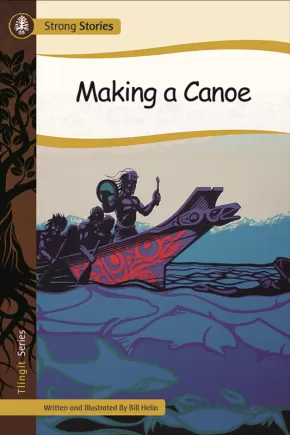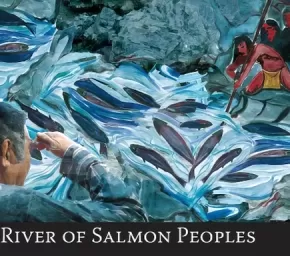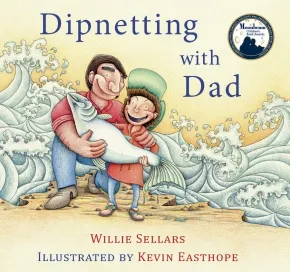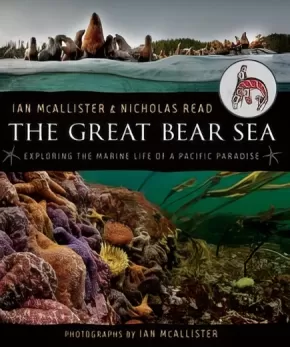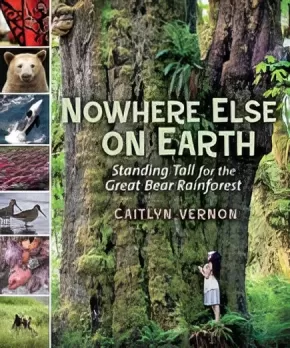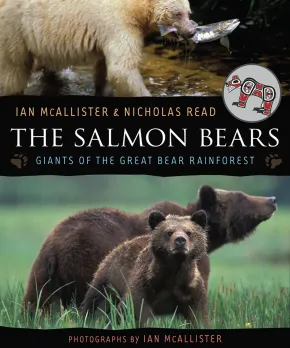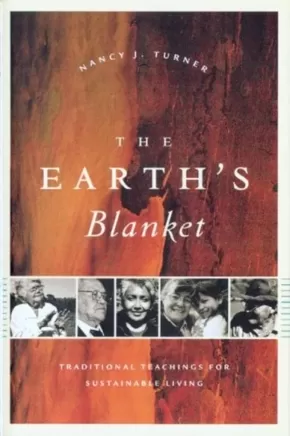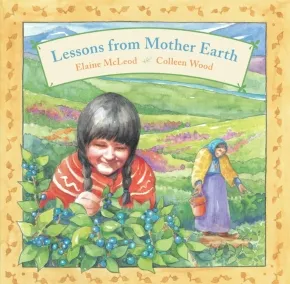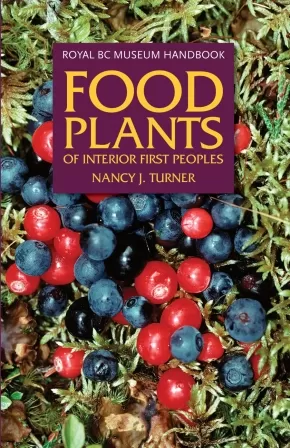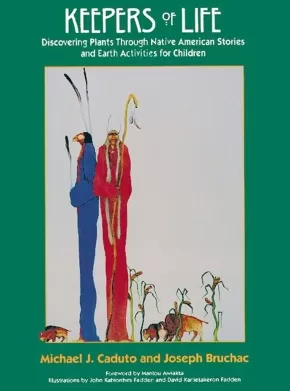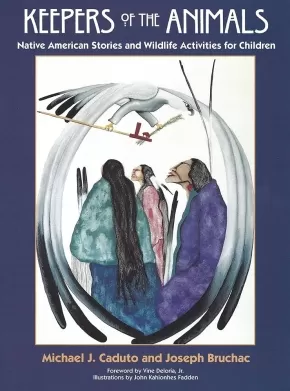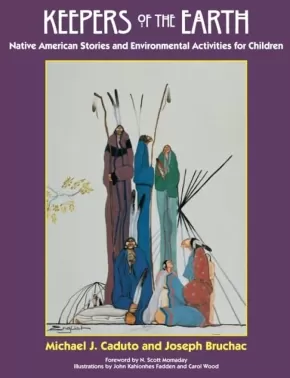
Science First Peoples Grades 5 - 9 - 2016
1
-
15
of
18 Results;
Sort By
Go To
of 2
Strong Stories Tlingit: Making a Canoe
 $9.95
$9.95

Artists:
Format:
Paperback
Text Content Territories:
Indigenous American; Alaska Native; Tlingit; Indigenous Canadian; First Nations; Tlingit;
ISBN / Barcode: 9781771741125
Synopsis:
Synopsis:
Bill Helin is a Tlingit artist, carver and storyteller. In this book, he describes the step-by-step process of making his first cedar dugout canoe. From searching for the right tree in the forest to paddling the finished canoe for the first time, each step is clearly described and illustrated.
Educator & Series Information
Making a Canoe is part of the Strong Stories: Tlingit series. Strong Stories focus on different First Nation territories from across Canada and the United States. These stories reflect the belief that our stories are the roots of our people, our lands and our cultures. It is from our stories that we grow and become strong and proud.
This resource is also available in French: Construire un canot.
Additional Information
16 pages | 6.00" x 9.00" | ISBN: 9781771741125
Orca Chief
$19.95
Format:
Hardcover
Text Content Territories:
Indigenous Canadian; First Nations; Tsimshian (Ts'msysen);
ISBN / Barcode: 9781550176933
Synopsis:
Synopsis:
Thousands of years ago in the village of Kitkatla, four hunters leave home in the spring to harvest seaweed and sockeye. When they arrive at their fishing grounds, exhaustion makes them lazy and they throw their anchor overboard without care for the damage it might do to marine life or the sea floor.
When Orca Chief discovers what the hunters have done, he sends his most powerful orca warriors to bring the men and their boat to his house. The men beg forgiveness for their ignorance and lack of respect, and Orca Chief compassionately sends them out with his pod to show them how to sustainably harvest the ocean’s resources.
Accompanied by almost exclusively new illustrations by Roy Henry Vickers, this next installment of the Northwest Coast Legends will captivate readers young and old with its vivid imagery and remarkable storytelling.
Educator & Series Information
Orca Chief is the third in a series of Northwest Coast legends by Roy Henry Vickers and Robert Budd.
Other books in this series include:
Raven Brings the Light
Cloudwalker
Orca Chief
Peace Dancer
Recommended for ages 3 to 6.
Additional Information
40 pages | 12.00" x 8.25"
River of Salmon Peoples
$32.95
Format:
Paperback
Text Content Territories:
Indigenous Canadian; First Nations;
ISBN / Barcode: 9781926886411
Synopsis:
Synopsis:
An expression of the people, culture, ceremony and songs along the Fraser, River of Salmon Peoples captures what the Fraser River, and its most valuable resource, the salmon, means to First Nations communities along its basin. The result of nine community engagements, extensive research over two years, and illuminating photographs and artwork, this book includes the oral narratives of each community along the river. While capturing timeless Indigenous stories and legends about the salmon and the river, this book is also an exploration of the future of the salmon and waters of the Fraser River.
Authenticity Note: After a team of researchers gathered a wealth of information from and about the indigenous cultures along the Fraser River, Jeannette Armstrong and Gerry William co-edited River of Salmon Peoples.
Ancient Pathways, Ancestral Knowledge: Ethnobotany and Ecological Wisdom of Indigenous Peoples of Northwestern North America
$150.00
Format:
Hardcover
Text Content Territories:
Indigenous American; Indigenous Canadian;
Reading Level: N/A
ISBN / Barcode: 9780773543805
Synopsis:
Synopsis:
How knowledge of plants and environments has been applied and shared over centuries and millennia by Indigenous peoples.
Volume 1: The History and Practice of Indigenous Plant Knowledge
Volume 2: The Place and Meaning of Plants in Indigenous Cultures and Worldviews
Nancy Turner has studied Indigenous peoples' knowledge of plants and environments in northwestern North America for over forty years. In Ancient Pathways, Ancestral Knowledge, she integrates her research into a two-volume ethnobotanical tour-de-force. Drawing on information shared by Indigenous botanical experts and collaborators, the ethnographic and historical record, and from linguistics, palaeobotany, archaeology, phytogeography, and other fields, Turner weaves together a complex understanding of the traditions of use and management of plant resources in this vast region. She follows Indigenous inhabitants over time and through space, showing how they actively participated in their environments, managed and cultivated valued plant resources, and maintained key habitats that supported their dynamic cultures for thousands of years, as well as how knowledge was passed on from generation to generation and from one community to another. To understand the values and perspectives that have guided Indigenous ethnobotanical knowledge and practices, Turner looks beyond the details of individual plant species and their uses to determine the overall patterns and processes of their development, application, and adaptation.
Volume 1 presents a historical overview of ethnobotanical knowledge in the region before and after European contact. The ways in which Indigenous peoples used and interacted with plants - for nutrition, technologies, and medicine - are examined. Drawing connections between similarities across languages, Turner compares the names of over 250 plant species in more than fifty Indigenous languages and dialects to demonstrate the prominence of certain plants in various cultures and the sharing of goods and ideas between peoples. She also examines the effects that introduced species and colonialism had on the region's Indigenous peoples and their ecologies.
Volume 2 provides a sweeping account of how Indigenous organizational systems developed to facilitate the harvesting, use, and cultivation of plants, to establish economic connections across linguistic and cultural borders, and to preserve and manage resources and habitats. Turner describes the worldviews and philosophies that emerged from the interactions between peoples and plants, and how these understandings are expressed through cultures’ stories and narratives. Finally, she explores the ways in which botanical and ecological knowledge can be and are being maintained as living, adaptive systems that promote healthy cultures, environments, and indigenous plant populations.
Ancient Pathways, Ancestral Knowledge both challenges and contributes to existing knowledge of Indigenous peoples' land stewardship while preserving information that might otherwise have been lost. Providing new and captivating insights into the anthropogenic systems of northwestern North America, it will stand as an authoritative reference work and contribute to a fuller understanding of the interactions between cultures and ecological systems.
Educator Information
Table of Contents
Volume One
Figures and Tables ix
Preface and Acknowledgments xv
Note on the Writing System Used in This Book xxxi
1 Introduction to the Book: Ethnobotanical and Ethnoecological Knowledge across Time and Space 3
Part One | History
2 Into the Past: Ancient Relationships among People, Plants, and Environments 43
3 Reflections on Plant Names in Understanding the History of People-Plant Relationships 117
4 Change, Loss, and Adaptation of Plant Traditions 191
Part Two | Development
5 Plants as Food: Development, Diversity, Dissemination 263
6 Plant Use in Technology over Time and Space 335
7 Herbal Medicine and Healing Traditions 415
Appendix 1: Major Sources of Information for the Book 467
Appendix 2: Names of Selected Native Plant Species in Indigenous Languages of Northwestern North America 473
Appendix 3: Names of Two Introduced Plants (Turnip and Potato) in Indigenous Languages of Northwestern North America 507
Notes 515
Volume Two
Figures and Tables ix
Preface xiii
Part Three - Integration and ManaGement
8 Moving for the Harvest: Seasonal Rounds and Plant Knowledge 3
9 Cultural Institutions Related to Ethnobotanical Knowledge and Practice 51
10 Trade and Exchange: Sharing Plant Products and Ethnobotanical Knowledge across Geographical and Cultural Space 101
11 Management and Sustainability of Plant Resources and Habitats 145
Part Four - UnderlyinG Philosophy
12 Narratives in Transmission of Ethnobotanical Knowledge 231
13 Worldview and Belief Systems in Ethnobotanical Knowledge Systems 297
14 Ancient Pathways and New Pathways for Retaining and Renewing Botanical and Environmental Knowledge Systems for the Future 351
Notes 413
References 441
Index of Plant Species 503
General Index 513
Additional Information
1056 pages | 6.00" x 9.00" | Hardcover
Dipnetting with Dad
$19.95
Artists:
Format:
Hardcover
Text Content Territories:
Indigenous Canadian; First Nations; Salish; Interior Salish; Secwepemc (Shuswap);
ISBN / Barcode: 9781927575536
Synopsis:
Synopsis:
BUMP, BUMP - SLAP, river sockeye salmon are pulled onto shore!
Set in the beautiful landscape of the Cariboo Chilcotin region, DIPNETTING WITH DAD is a delightful and colourful story of a father teaching his son the Secwepemc method of fishing known as dipnetting. Together they visit the sweat lodge, mend the nets, select the best fishing spot and catch and pack their fish through rugged bush back to the family home for traditional preparation. In his first book, Williams Lake Indian Band member Willie Sellars captures family values, the importance of storytelling, community living and coming of age in one of BC's oldest cultures. Debut artist Kevin Easthope's contemporary and dynamic illustrations bring the characters to life as they jump off the page and pull you into their world.
Additional Information
48 pages | 9.84" x 8.58"
The Great Bear Sea
$19.95
Artists:
Format:
Paperback
Text Content Territories:
Indigenous Canadian; First Nations;
ISBN / Barcode: 9781459800199
Synopsis:
Synopsis:
Just below the surface of the Great Bear Sea, a world of mystery exists. Intertidal zones full of colour and exotic-looking life can support thousands of different species of plants and animals.
This book by Ian McAllister and Nicholas Read explores the intricate relationship between this mysterious underwater ecosystem and the life it supports; mighty great whales, sea lions, dolphins, sea otters, wild salmon, bears, wolves, soaring eagles and so much more.
Additional Information
128 pages | 7.5" x 9"
Saanich Ethnobotany
$29.95
Format:
Paperback
Text Content Territories:
Indigenous Canadian; First Nations; Salish; Coast Salish; Saanich (WSANEC);
ISBN / Barcode: 978-0772665775
Synopsis:
Synopsis:
Nancy Turner and Richard Hebda present the results of many years of working with botanical experts from the Saanich Nation on southern Vancouver Island. Elders Violet Williams, Elsie Claxton, Christopher Paul and Dave Elliott pass on their knowledge of plants and their uses to future generations of Saanich and Coast Salish people, and to anyone interested in native plants. Saanich Ethnobotany includes detailed information about the plants that were traditionally harvested to use in all aspects of Saanich life, such as for food and medicines, and to make tools, buildings and weapons. Each plant is listed by its common (English), scientific and Saanich names. Each listing contains a brief botanical description with a colour photograph, where to find the plant and how it was used traditionally by the Saanich people. This important book celebrates the richness and tremendous value of locally based knowledge in a rapidly changing world.
Authenticity Note: This book has received the Authentic Text label because of its contributions from Elders Violet Williams, Elsie Claxton, Christopher Paul, and Dave Elliott.
Nowhere Else on Earth: Standing Tall for the Great Bear Rainforest (2 in Stock) - ON SALE!
$18.00 $22.95
Format:
Paperback
ISBN / Barcode: 9781554693030
Synopsis:
Synopsis:
You don't have to live in the Great Bear Rainforest to benefit from its existence, but after you read Nowhere Else on Earth you might want to visit this magnificent part of the planet. Environmental activist Caitlyn Vernon guides young readers through a forest of information, sharing her personal stories, her knowledge and her concern for this beautiful place.
Full of breathtaking photographs and suggestions for ways to preserve this unique ecosystem, Nowhere Else on Earth is a timely and inspiring reminder that we need to stand up for our wild places before they are gone.
Visit the website for some great downloadable resources!
http://www.greatbearrainforest.ca/
The Salmon Bears: Giants of the Great Bear Rainforest
$19.95
Artists:
Format:
Paperback
Text Content Territories:
Indigenous Canadian; First Nations;
ISBN / Barcode: 9781554692057
Synopsis:
Synopsis:
Extensively illustrated with Ian McAllister's magnificent photographs, The Salmon Bears explores the delicate balance that exists between the grizzly, black and spirit bears and their natural environment, the last great wilderness along the central coast of British Columbia.
Key to this relationship are the salmon that are born in the rivers each spring, who then go out to sea as juveniles and return as adults to spawn and die, completing a cycle of life that ensures the survival of not only their own species but also virtually every other plant and animal in the rainforest.
In clear language suitable for young readers, the authors describe the day-to-day activities that define the lives of these bears through the four seasons. But this is also very much the story of the Great Bear Rainforest—a vast tract of land that stretches from the northern tip of Vancouver Island to the Alaska border and contains some of the largest stands of old-growth forest left on the West Coast. The Salmon Bears focuses on the interconnectedness of all life in the rainforest and makes a strong case for the importance of protecting this vital ecological resource.
Additional Information
90 pages | 7.50" x 9.00"
The Earth's Blanket, Traditional Teachings for Sustainable Living
$24.95
Format:
Paperback
Text Content Territories:
Indigenous Canadian; First Nations;
ISBN / Barcode: 9781553651802
Synopsis:
Synopsis:
Renowned ethnobotanist Nancy Turner brings together decades of experience working with First Nations in the Pacific Northwest. In The Earth's Blanket, she explores the wealth of ecological knowledge and the deep personal connection to the land and its history that is encoded in indigenous stories and lifeways, and asks what they can teach all of us about living in harmony with our surroundings.
Scholarly in its thinking but accessible in its writing, The Earth's Blanket combines first-person research with insightful critiques of Western concepts of environmental management and scientific ecology to propose how systems of traditional ecological knowledge can be recognized and enhanced. It is an important book, a magnum opus with the power to transform our way of thinking about the Earth and our place within it.
Additional Information
176 pages | 6.00" x 9.00"
Lessons From Mother Earth
$10.99
Artists:
Format:
Paperback
Text Content Territories:
Indigenous Canadian; First Nations; Tutchone; Northern Tutchone; Na-Cho Nyak Dun;
ISBN / Barcode: 9780888998323
Synopsis:
Synopsis:
This gentle story demonstrates the First Nations' tradition of taking care of Mother Earth.
Tess has visited her grandmother many times without really being aware of the garden. But today when they step out the door, Tess learns that all of nature can be a garden. And if you take care of the plants that are growing, if you learn about them - understanding when they flower, when they give fruit, and when to leave them alone - you will always find something to nourish you.
At the end of the day, Tess is grateful to Mother Earth for having such a lovely garden, and she is thankful for having such a wise grandma.
Elaine McLeod's poetic text and Colleen Wood's gentle watercolors combine to make Lessons from Mother Earth a celebration of nature and life.
Educator Information
Curriculum Connections: Social Studies, Science and Nature.
Additional Information
24 pages | 8.80" x 8.80"
Food Plants Of Interior First Peoples
$26.95
Format:
Paperback
Text Content Territories:
Indigenous Canadian; First Nations;
Reading Level: N/A
ISBN / Barcode: 9780772658463
Synopsis:
Synopsis:
Nancy Turner describes more than 150 plants traditionally harvested and eaten by First Peoples east of the Coast Mountains in British Columbia and northern Washington. Each description includes information on where to find the plant and a discussion on traditional methods of harvesting and preparation.
Educator Information
B.C. Science Supplementary Resouce Gr.7- Life Science
Additional Information
224 pages | 5.50" x 8.50"
Keepers of Life: Discovering Plants through Native American Stories and Earth Activities for Children
$31.95
Format:
Paperback
Text Content Territories:
Indigenous American; Native American;
ISBN / Barcode: 9781555913878
Synopsis:
Synopsis:
The first paperback edition of Keepers of Life from the incredibly popular Keepers series.
These bestselling books have been long-time favourites with educators for their innovative approach to teaching children about Native cultures and the environment. Each book, co-authored by Joseph Bruchac and Michael J. Caduto, combines Native legends with information and activities about the natural world.
Reviews
"This book is an excellent school resource for introducing children to Indigenous worldviews. It is comprised of 18 story packages which may be used as teaching tools in the classroom. The stories are divided by subject nature and include one introduction story, two stories about creation, one about celebration, thanksgiving and stewardship, eight about flowers and fruits, seeds and spores, five about survival, and one about healing our relations. Each traditional story acknowledges the Native North American cultures in which the story originated. An accompanying map helps readers situate where these different cultural groups traditionally resided. The stories are typically one to three pages long, making them ideal for sharing in the oral tradition. The stories are accompanied by beautiful black and white ink drawings, artistically representing the events and characters in each story. Following each story is a discussion prompt to help teachers explain the story’s context. The discussion prompts relate the story to Native North American traditional worldviews and emphasize mankind’s interconnection with the natural world." - Rachel Yaroshuk, CM Magazine
Educator & Series Information
Books in the Keepers series are recommended by educational journals across North America for children aged 5 to 12.
Included at the end of the book is a Glossary and Pronunciation Key to Native North American Words and Names.
Foreword by Marilou Awiakta.
Additional Information
288 pages | 8.17" x 10.73"
Keepers of the Animals: Native American Stories and Wildlife Activities for Children
$33.95
Format:
Paperback
Text Content Territories:
Indigenous American; Native American;
ISBN / Barcode: 9781555913861
Synopsis:
Synopsis:
Part of the bestselling "Keepers" series, Keepers of the Animals encourages an early interest in wildlife and the environment through Native stories and legends and extensively tested activities for children aged 5 to 12.
Perfect for classroom and home use, this interdisciplinary book teaches children to appreciate Native cultures and heritage while learning about North American animals, insects, fish, reptiles, and birds.
From the Introduction: Keepers of the Animals continues the tradition established by its highly popular and critically acclaimed predecessor, Keepers of the Earth. Here each parent, teacher, naturalist and storyteller is given the tools to bring the wonder and magic of the stories and lessons into the lives of children by empowering them with knowledge, skills and enjoyment found in the activities. This book is about learning to understand, live with and care for the animals: A gathering of carefully selected Native North American animal stories and hands-on activities that promote an understanding of, appreciation for, empathy with and responsible stewardship toward all animals on Earth, including human beings.
Educator & Series Information
B.C. Science Supplementary Resouce Gr.4- Life Science.
This book is part of the Keepers series.
Foreword by Vine Deloria, Jr.
Additional Information
288 pages | 8.35" x 11.00"
Keepers of the Earth: Native American Stories and Environmental Activities for Children
$33.95
Format:
Paperback
Text Content Territories:
Indigenous American; Native American;
ISBN / Barcode: 9781555913854
Synopsis:
Synopsis:
Native American stories combine with related hands-on activities to inspire children with a deep respect and interest in the Earth and in Native cultures in this popular and critically acclaimed book. Keepers of the Earth uses an interdisciplinary approach to introduce environmental concepts to children, aged five through twelve. The activities include theatre, reading, writing, science, social studies, and mathematics, and are designed to engage all of the senses.
Reviews
"Keepers of the Earth is an excellent school resource introducing children to Aboriginal worldviews. The book is comprised of 21 story packages which may be used as teaching tools in the classroom. The stories are divided by subject nature and include three stories about creation, two about fire, one about the earth, one about wind and weather, three about water, two about sky, one about seasons, six about plants and animals, one about life, death, and spirits, and about the unity of earth.... Following each story is a discussion prompt to help teachers explain the story’s context. The discussion prompts relate the story to First Nations traditional worldviews and emphasize mankind’s interconnection with the natural world. Following the discussion prompts, there is a list of questions to encourage student reflection. Some of the questions are focussed more on story comprehension while others encourage children to reflect on the greater meaning of the story and how it relates to their daily life.... Keepers of the Earth offers suggestions for activities to solidify and expand the learning of the story. Activity suggestions include field trips, demonstrations, experimentationand further discussion. Each story is accompanied by at least one activity with recommendations as to which age group tocater the activityto. While most of the activities seem directed at grades 3-8, there are many activities that could suit the needs of older or younger children with little or no modification." - Rachel Yaroshuk, CM Magazine
Educator & Series Information
This book is part of the Keepers Series.
Foreword by N. Scott Momaday.
Additional Information
240 pages | 8.25" x 10.72"
Sort By
Go To
of 2

